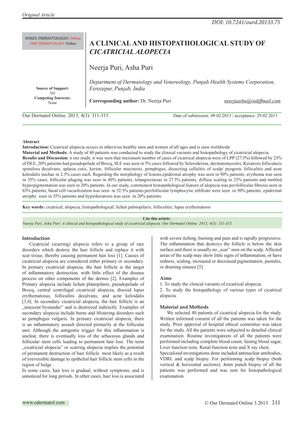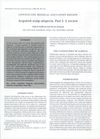A Clinical and Histopathological Study of Cicatricial Alopecia
July 2013
in “
Our Dermatology Online
”

TLDR Lichen planopilaris is the most common type of scarring hair loss observed, with a variety of symptoms and tissue changes.
In the 2013 study of 40 patients, researchers found that lichen planopilaris (LPP) was the most prevalent form of cicatricial alopecia, followed by discoid lupus erythematosus (DLE) and pseudopelade of Brocq. The majority of the patients were female, with a 1.5:1 female to male ratio, and 70% had multiple patches of hair loss. Clinically, 90% showed epidermal atrophy, 55% had erythema, and 40% displayed follicular plugging. Histopathological examination revealed that 65% had perifollicular fibrosis, 52.5% showed basal cell vacuolization, and 50% had perifollicular lymphocytic infiltrate. The study concluded that there is a variety of clinical and histopathological presentations for cicatricial alopecia, with LPP, DLE, and pseudopelade of Brocq being the most frequently observed types.






